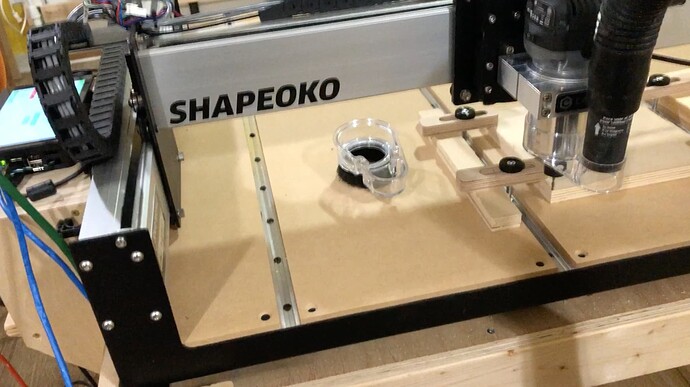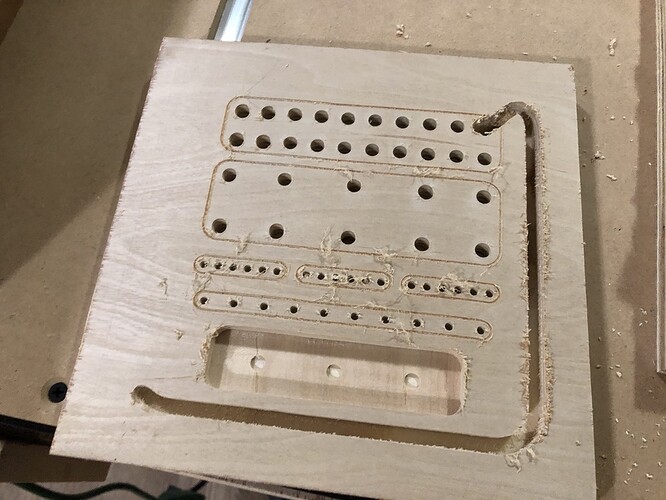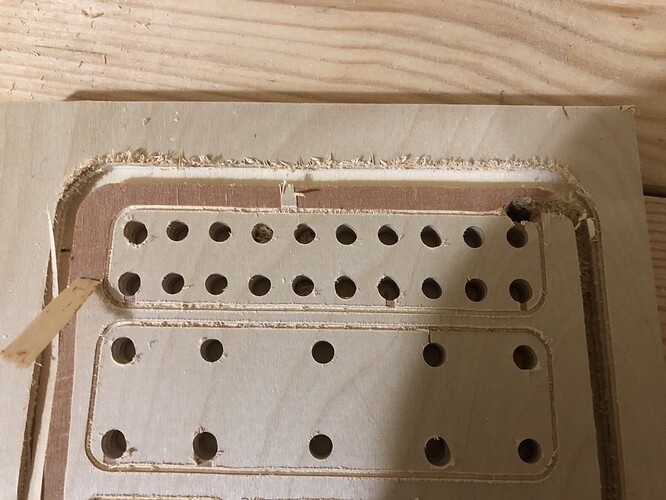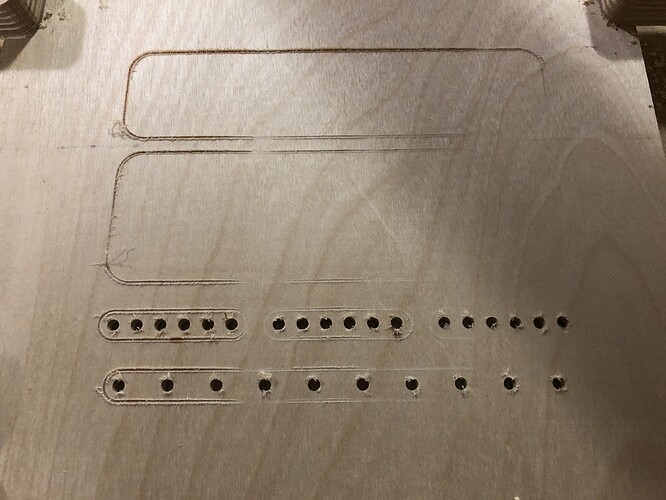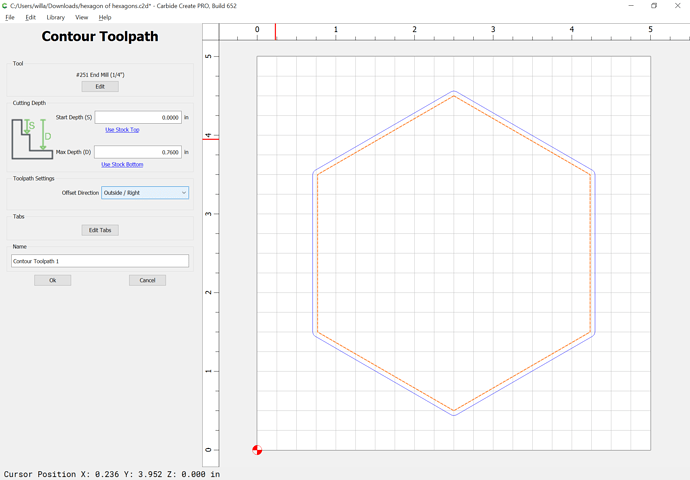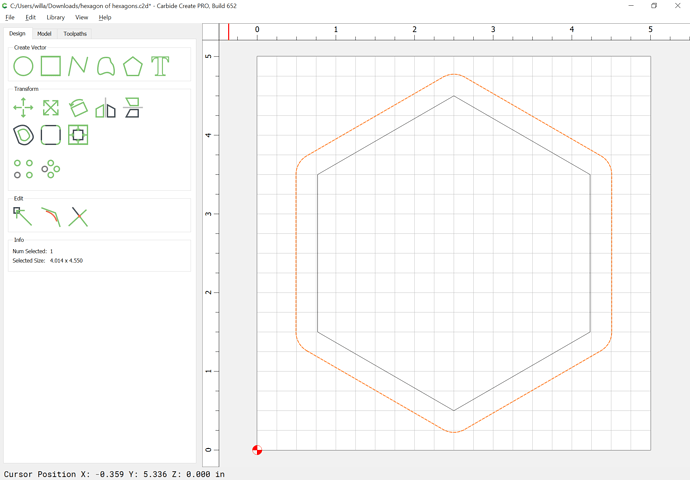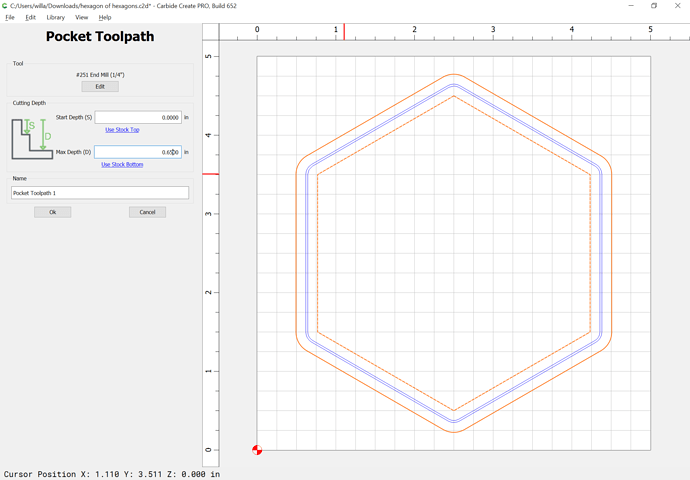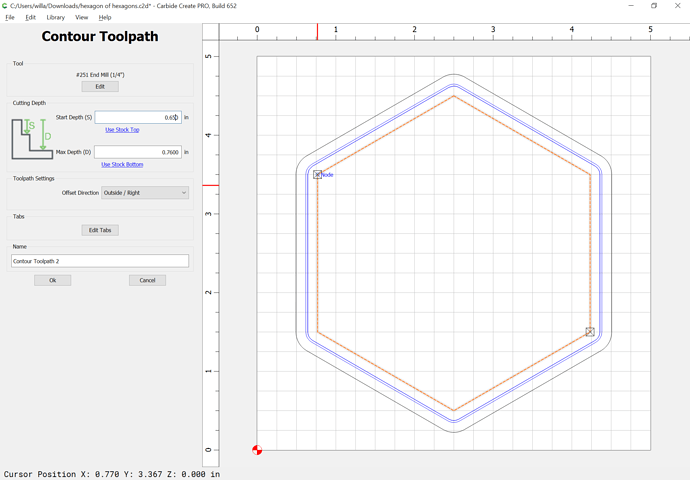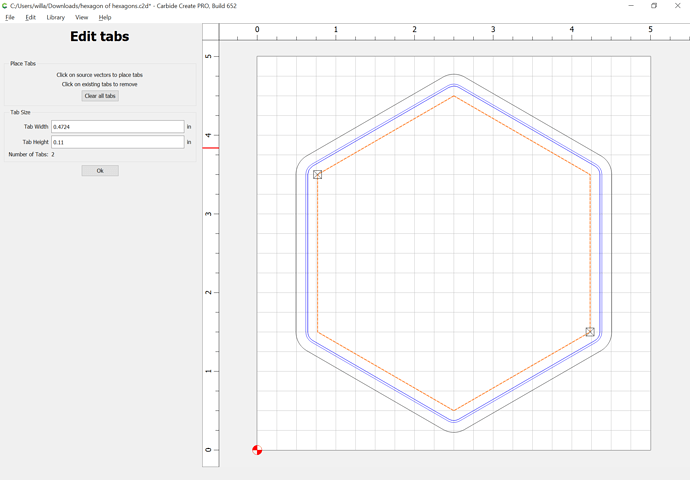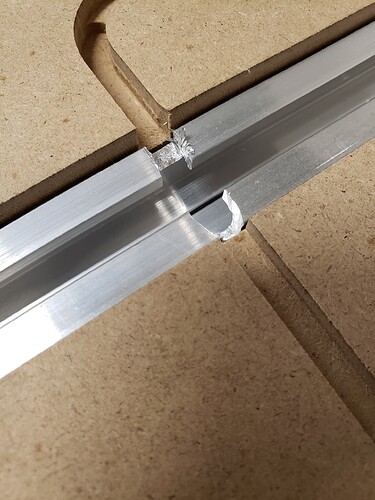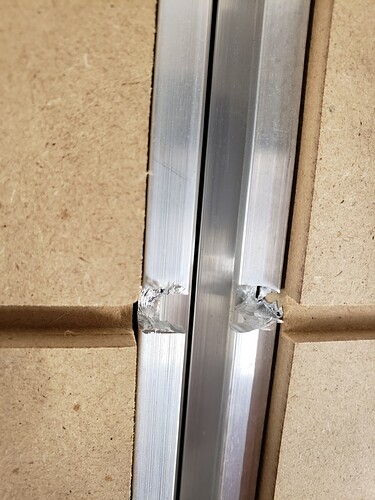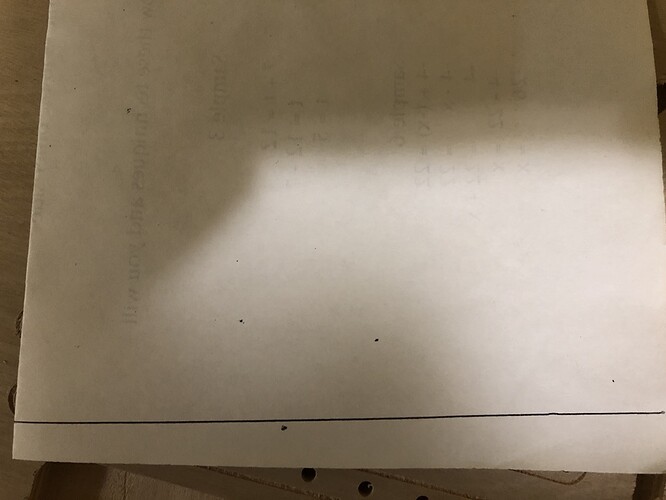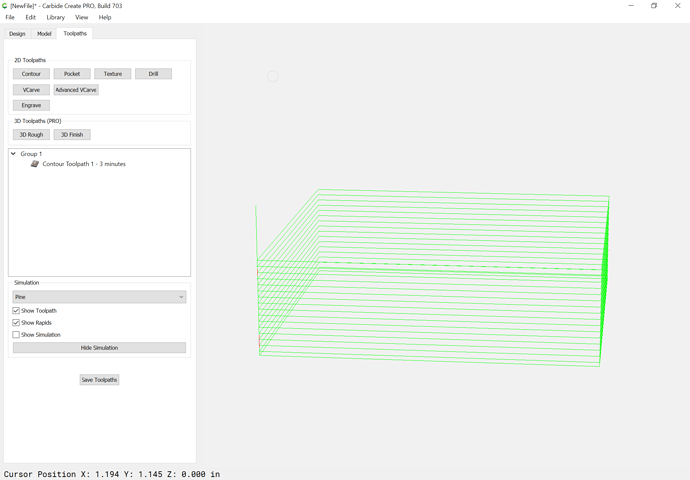I have a Shapeoko 3 XXL (Or is that a 3 Pro? Can’t keep track of that kind of thing.) I’m trying to make the endmill holder in the tutorials. I save using the 102 tool (1/4") for last, since that cuts out the finished product from the surrounding wood. I tried this once, without the T-Tracks, but it didn’t work and I figured I’d be safer if I went on and installed them before trying anything else. It was easy and quick to install them. With each rail and each board, I pushed down and to the left to make sure they didn’t stick up and were tight against the left size. (Also worth noting that I put levelers on the table legs to make sure the tale was level as well as using levelers on the Shapeoko to be sure the bed was level and checked to make sure everything was square.)
When I was ready to try a 2nd time, I clamped down my material. I also put the Sweepie on (I know the bottom part is off in the photo below.)
I had no problem getting through the first two files, using the 1/8" endmill and the 60° endmill to etch the lines. (Well, one glitch - I mention that at the end, in case it matters.) Everything was fine until, in the last step, the router started making a “top” corner and ran into issues, as you can see in the photo below. I had to use my emergency cutoff switch. The endmill came out of the router and put a hole in the fill board between the T-Tracks.
I suspect that the problem on this test was that the wood piece I had down on the other side of the clamp was just a little thicker than the material I was cutting on and that might have lead to a loose hold on my material on that side.
I changed to using wood of the same thickness of the material all the way around, on all clamps. I did make a mistake of positioning my material, and that led to a mess due to the grain on the surface level of the plywood splintering and coming up. That’s my bad, I know what I did, so no need to worry about that.
This time the router made it around the edge of the work once, but when it got to the same place as before, on the 2nd time around (last time it happened on the 2st time around), the same thing happened. The material came loose and everything went bad from there.
You can see that, once again, it went off track and drilled an extra hole in my project and made another hole down into the fill board. So the same thing happened in the same place both times. The difference is that the 2nd time, it had already gone around once.
I’m wondering if it could be related to another issue. When I first used the 302 endmill to draw the lines on the surface, I re-zeroed the Z-Axis, since I knew the endmill tips were not all at the same height. You can see the result I got:
The lines etched in on the left, but not on the right. I know this means the distance from the tool to the board are not consistent. I checked if it was clamped down and that the fill board was all the way down. I have not yet checked to be sure everything on the Shapeoko is still squared off. To fix it, I just rezeroed a few 1/100 of a MM lower and ran that file again. It looked fine and I could swear that I could not see a difference in depth in those lines when I inspected them later.
I’m wondering if this issue could be connected with the big issue - maybe something’s not level and that’s creating a problem? I question that, though, since it looks like the lines aren’t etched in other places, so I’m thinking the board (which has been in my shop for a few years) might have a slight warp to it that I can’t see. I’m not overly worried about this issue, but thought it best to mention it in case it has something to do with the bigger issue.
